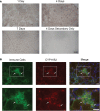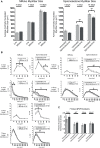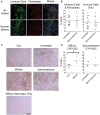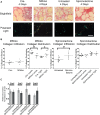Mineralocorticoid Receptor Signaling Contributes to Normal Muscle Repair After Acute Injury
- PMID: 31736768
- PMCID: PMC6830343
- DOI: 10.3389/fphys.2019.01324
Mineralocorticoid Receptor Signaling Contributes to Normal Muscle Repair After Acute Injury
Abstract
Acute skeletal muscle injury is followed by a temporal response of immune cells, fibroblasts, and muscle progenitor cells within the muscle microenvironment to restore function. These same cell types are repeatedly activated in muscular dystrophy from chronic muscle injury, but eventually, the regenerative portion of the cycle is disrupted and fibrosis replaces degenerated muscle fibers. Mineralocorticoid receptor (MR) antagonist drugs have been demonstrated to increase skeletal muscle function, decrease fibrosis, and directly improve membrane integrity in muscular dystrophy mice, and therefore are being tested clinically. Conditional knockout of MR from muscle fibers in muscular dystrophy mice also improves skeletal muscle function and decreases fibrosis. The mechanism of efficacy likely results from blocking MR signaling by its endogenous agonist aldosterone, being produced at high local levels in regions of muscle damage by infiltrating myeloid cells. Since chronic and acute injuries share the same cellular processes to regenerate muscle, and MR antagonists are clinically used for a wide variety of conditions, it is crucial to define the role of MR signaling in normal muscle repair after injury. In this study, we performed acute injuries using barium chloride injections into tibialis anterior muscles both in myofiber MR conditional knockout mice on a wild-type background (MRcko) and in MR antagonist-treated wild-type mice. Steps of the muscle regeneration response were analyzed at 1, 4, 7, or 14 days after injury. Presence of the aldosterone synthase enzyme was also assessed during the injury repair process. We show for the first time aldosterone synthase localization in infiltrating immune cells of normal skeletal muscle after acute injury. MRcko mice had an increased muscle area infiltrated by aldosterone synthase positive myeloid cells compared to control injured animals. Both MRcko and MR antagonist treatment stabilized damaged myofibers and increased collagen infiltration or compaction at 4 days post-injury. MR antagonist treatment also led to reduced myofiber size at 7 and 14 days post-injury. These data support that MR signaling contributes to the normal muscle repair process following acute injury. MR antagonist treatment delays muscle fiber growth, so temporary discontinuation of these drugs after a severe muscle injury could be considered.
Keywords: conditional knockout mouse; mineralocorticoid receptor; mineralocorticoid receptor antagonist; muscle injury; myofiber; spironolactone.
Copyright © 2019 Hauck, Howard, Lowe, Rastogi, Pico, Swager, Petrosino, Gomez-Sanchez, Gomez-Sanchez, Accornero and Rafael-Fortney.
Figures






Similar articles
-
Mineralocorticoid Receptor Signaling in the Inflammatory Skeletal Muscle Microenvironments of Muscular Dystrophy and Acute Injury.Front Pharmacol. 2022 Jun 28;13:942660. doi: 10.3389/fphar.2022.942660. eCollection 2022. Front Pharmacol. 2022. PMID: 35837290 Free PMC article. Review.
-
Myeloid mineralocorticoid receptors contribute to skeletal muscle repair in muscular dystrophy and acute muscle injury.Am J Physiol Cell Physiol. 2022 Mar 1;322(3):C354-C369. doi: 10.1152/ajpcell.00411.2021. Epub 2022 Jan 19. Am J Physiol Cell Physiol. 2022. PMID: 35044859 Free PMC article.
-
Mineralocorticoid receptor antagonists improve membrane integrity independent of muscle force in muscular dystrophy.Hum Mol Genet. 2019 Jun 15;28(12):2030-2045. doi: 10.1093/hmg/ddz039. Hum Mol Genet. 2019. PMID: 30759207 Free PMC article.
-
Myeloid cells are capable of synthesizing aldosterone to exacerbate damage in muscular dystrophy.Hum Mol Genet. 2016 Dec 1;25(23):5167-5177. doi: 10.1093/hmg/ddw331. Hum Mol Genet. 2016. PMID: 27798095 Free PMC article.
-
Molecular mechanisms and therapeutic strategies of chronic renal injury: renoprotective effects of aldosterone blockade.J Pharmacol Sci. 2006 Jan;100(1):9-16. doi: 10.1254/jphs.fmj05003x3. Epub 2006 Jan 6. J Pharmacol Sci. 2006. PMID: 16397374 Review.
Cited by
-
Temporal regulation of the Mediator complex during muscle proliferation, differentiation, regeneration, aging, and disease.Front Cell Dev Biol. 2024 Apr 16;12:1331563. doi: 10.3389/fcell.2024.1331563. eCollection 2024. Front Cell Dev Biol. 2024. PMID: 38690566 Free PMC article.
-
Intramuscular CMT-167 Tumors Produce a Mild Cachexia Phenotype in C57BL/6J Mice.JCSM Commun. 2025 Jan-Jun;8(1):e117. doi: 10.1002/rco2.117. Epub 2025 Feb 6. JCSM Commun. 2025. PMID: 40655116 Free PMC article.
-
Mineralocorticoid Receptor Signaling in the Inflammatory Skeletal Muscle Microenvironments of Muscular Dystrophy and Acute Injury.Front Pharmacol. 2022 Jun 28;13:942660. doi: 10.3389/fphar.2022.942660. eCollection 2022. Front Pharmacol. 2022. PMID: 35837290 Free PMC article. Review.
-
Sympathetic activity is correlated with satellite cell aging and myogenesis via β2-adrenoceptor.Stem Cell Res Ther. 2021 Sep 16;12(1):505. doi: 10.1186/s13287-021-02571-8. Stem Cell Res Ther. 2021. PMID: 34530910 Free PMC article.
-
Current state of cardiac troponin testing in Duchenne muscular dystrophy cardiomyopathy: review and recommendations from the Parent Project Muscular Dystrophy expert panel.Open Heart. 2021 Mar;8(1):e001592. doi: 10.1136/openhrt-2021-001592. Open Heart. 2021. PMID: 33762424 Free PMC article. Review.
References
Grants and funding
LinkOut - more resources
Full Text Sources
Molecular Biology Databases

